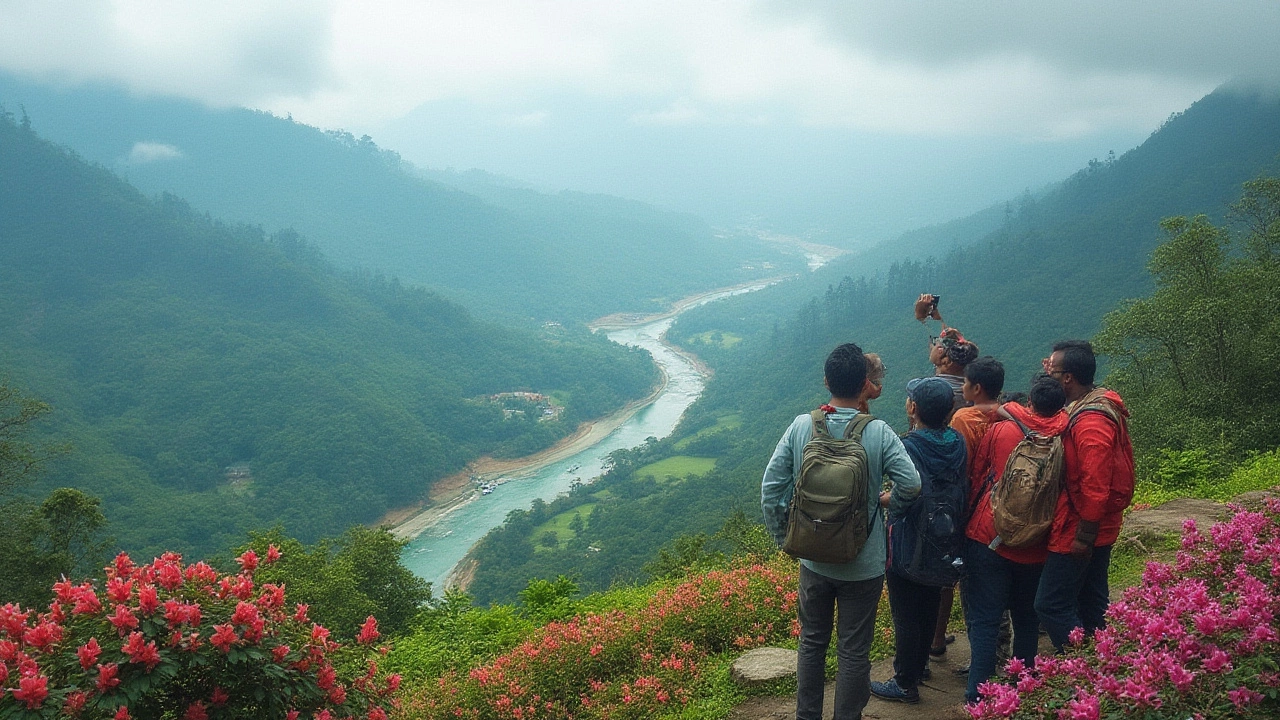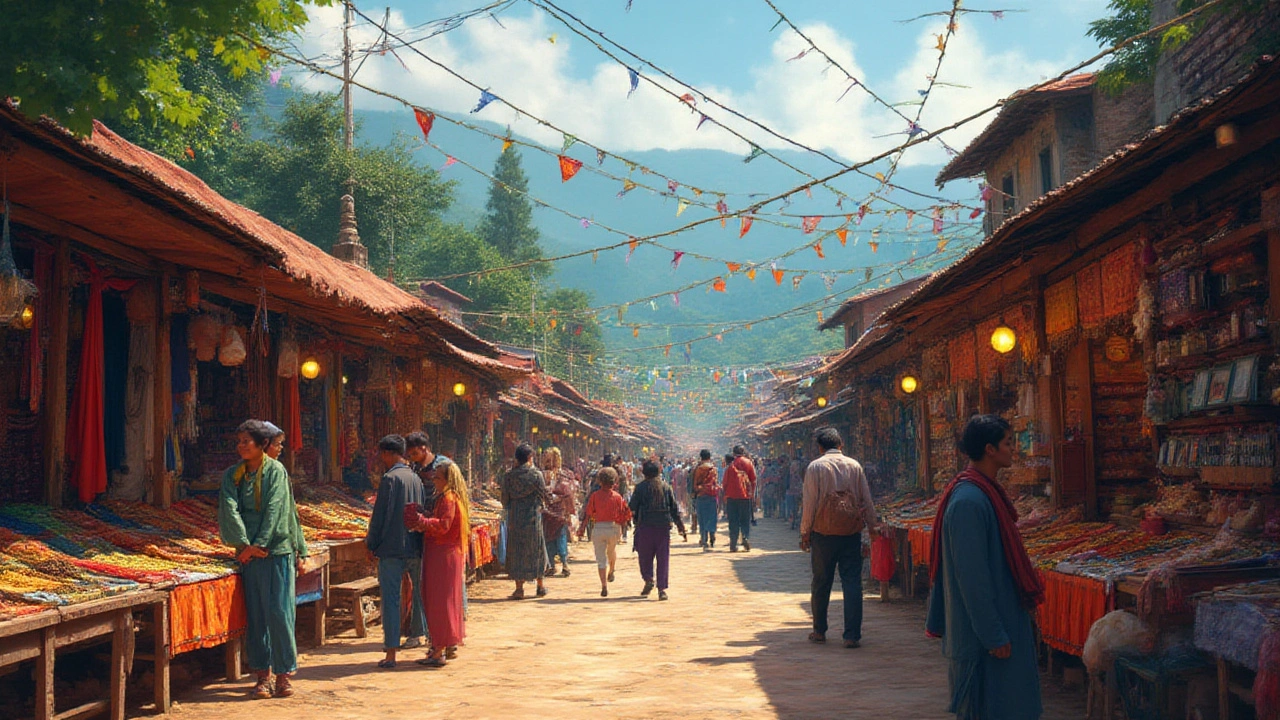You know those places that seem far away, almost like secrets tucked behind clouds and rivers? North East India is one of those rare corners of the map. Everyone talks about its wild beauty, but no one can agree on how long you really need to see it—so let's clear that up once and for all.
What Makes North East India Unique?
North East India travel isn’t like any other trip in the country. Seven states—Assam, Arunachal Pradesh, Meghalaya, Mizoram, Manipur, Nagaland, and Tripura—each have their own flavors, cultures, and surprises. Unlike the well-trodden routes in Rajasthan or Goa, this region feels like you’re unlocking a new world every 100 kilometers. You’ve got floating national parks, living root bridges thick as your thigh, remote monasteries with chanting monks, and food that’s nothing like the butter chicken down south.
There’s also the rhythm of daily life here. It’s slower, yes, but that’s not a bad thing for travelers. Heading from Guwahati to Tawang isn’t just a dash across the mountains; it’s an odyssey, with switchback roads and misty valleys testing both patience and your phone’s photo storage. Plus, access isn’t always smooth. Some towns are connected by a single creaky bridge, others might need an ILP (Inner Line Permit) just to visit. It’s not tricky, but it’s definitely different.
Ever since the Hornbill Festival and Cherry Blossom season started popping up on Instagram, travelers have realized the region’s worth more than a two-day detour. Admissions for Kaziranga National Park are often snapped up ahead of the rush. The monsoon brings out every shade of green and turns the waterfalls into monsters, but it can also slow you down. Simply put: you can’t just ‘see’ North East India; you have to soak it up.
Take a look at these remarkable numbers and points that set the region apart:
| State | Main Draw | Unique Fact |
|---|---|---|
| Assam | Kaziranga National Park | Hosts two-thirds of the world’s one-horned rhinos |
| Meghalaya | Cherrapunji & Living Root Bridges | Among Earth’s wettest places |
| Arunachal Pradesh | Tawang Monastery | India’s largest monastery |
| Manipur | Loktak Lake | World’s only floating national park |
| Nagaland | Hornbill Festival | Showcases 17+ Naga tribes |
| Mizoram | Lush Hills & Bamboo Forests | Over 20 major dance forms |
| Tripura | Ujjayanta Palace | Palace houses a state museum |
So when you think about how much time you need, you’re not just counting days. You’re adding in conversation with locals, extra nights waiting for a rainstorm to clear, that unexpected festival parade, or the extra two hours your bus takes because the cows refused to move.
Choosing the Perfect Itinerary Length: What’s Enough?
Admit it: sometimes your vacation days decide your trip length, not the other way around. But here’s what you actually need to get the real North East India experience—let’s be real, anything less and you’ll leave with regret.
- For a Taste (5-7 days): If you only have a week, you can focus on just Assam and Meghalaya. Think wildlife safaris at Kaziranga, boat rides on the Brahmaputra, and sipping local rice beer in a Khasi village. This is enough to hit the famous stops like Shnongpdeng’s river, Cherrapunji’s misty cliffs, and maybe the living root bridges. But don’t expect to add Arunachal, Nagaland, or deeper corners—travel is slow, and distances between highlights are deceptive.
- The Highlights Trip (10-14 days): With two full weeks, you can expand your reach: add Arunachal Pradesh for the ethereal drive to Tawang, or cross over to Nagaland for tribal villages and the buzz of Kohima. You’ll have time for Imphal and the Loktak Lake’s floating wonders, plus sweet detours for roadside momos. This is the sweet spot—enough for memorable stories and not rushed to the point of exhaustion.
- The Deep Dive (3 weeks+): Three weeks? Now you’re talking. That’s enough for the slow travel magic: bamboo forests in Mizoram, Tripura’s royal palaces, and lazy afternoons spent in the local markets. You’ll find yourself invited into homes, learning the rhythm of festivals (like Bihu in Assam or Chapchar Kut in Mizoram), and picking up fragments of unfamiliar languages. This is when the Northeast unfolds without hurry, each state showing you that it doesn’t have to compete for your attention.
A few real traveler hacks: Night buses between states can save you a night’s stay but cost a bit of sleep. Try breaking up longer routes; Guwahati makes a great base for day trips into Meghalaya. And the simple rule: if you have just one more day to spare, always spend it! The extra time usually pays off with the sweetest moments—the silent sunrise over the Himalayas, a surprise festival dance in a bamboo village, or a last-minute chance to taste jadoh or smoked pork at a market.
Check out a sample travel plan for the 14-day highlights trip:
| Day | Destination | Key Experience |
|---|---|---|
| 1-2 | Guwahati & Assam | River cruise, Kamakhya Temple |
| 3-5 | Kaziranga National Park | Jeep safari, tea estates |
| 6-8 | Shillong & Cherrapunji | Caves, root bridges, waterfalls |
| 9-11 | Tawang (Arunachal) | Monasteries, Sela Pass |
| 12 | Nagaland | Kohima, tribal villages |
| 13-14 | Imphal (Manipur) | Loktak Lake, Ima Keithel |
Obviously, you can swap days or skip places to suit your interests. And if you’re the type who loves nothing more than sitting in a hilltop café all afternoon, stretch the trip however you want.

When to Go and What to Pack for North East India
Timing is half the magic. Monsoons (June to September) turn the hills lime green and roar up every waterfall, but sometimes roads flood or tracks get slippery. Winter (October to March) is perfect: skies are bright blue, temperatures comfortable, and festivals like Hornbill or Sangai are in full swing. Summer can be humid, but if you stick to the hills, you’ll get cool air that’ll make you forget you’re still in India.
Keep in mind some states close certain areas to tourists around local elections or major festivals. It never hurts to double-check state government travel advisories. And always book your Inner Line Permits for Arunachal, Nagaland, and Mizoram in advance. It’s not a bureaucratic nightmare (honestly, it’s usually an online form), but it can trip up last-minute planners.
So what should you actually bring? Here’s a quick hit-list based on the weather and landscape:
- Comfortable, quick-drying clothes—rain can surprise you in any month
- Strong walking shoes—for root bridges, rocky trails, and wet market streets
- Light jacket or hoodie—especially in the hills and early mornings
- Umbrella or raincoat—never underestimate Meghalaya’s clouds
- Photocopies of your ID and permits—all hotels ask for these
- Universal adapter—the plug types sometimes change between states
- Cash—ATMs are rare in the more remote villages
- Reusable water bottle—you’ll spot plenty of refill stations at homestays
- Basic medicines—pharmacies aren’t everywhere past major towns
One quirk: the sun rises and sets early here. Expect dawn at around 4:30 am and darkness by 5 pm, especially in winter months. You’ll want to plan sightseeing in the morning and leave travel time for after lunch. Trust me, the landscapes look their absolute best as the fog clears at sunrise.
And food? It’s a world on its own. Assam’s thalis and fish; Meghalaya’s smoked meats and spicy pickles; Naga pork so spicy you’ll need sweet tea after every bite. Sample the local rice beers (like Apong or Zutho) if you get the chance—it’s part of the experience. The markets, especially in Shillong and Kohima, are too fascinating to skip. Fresh broomsticks, handmade shawls, wild honey, and bamboo shoot pickles all make for great gifts.
How to Make the Most of Your Trip—and Stay Sane
Traveling in North East India doesn’t reward speed. The landscape is too wild, the distances too tricky, and—most important of all—this region isn’t built for rushing. The best stories come from the days you give yourself a little wiggle room. Missing the only bus to Mawlynnong might sound like a disaster, but sometimes a local family’s offer of a lift is how you get invited to a backyard festival instead.
Here’s what real travelers wish they’d known:
- Plan for buffer days—roadblocks, surprise processions, or sheep traffic jams are real here
- Stay longer in fewer places—quality beats quantity. Instead of ticking off every state, get to know one or two deeply
- Talk to locals—homestay hosts and young guides often know shortcuts and unlisted festivals. They’re the gatekeepers to the best experiences
- Treat permits as a treasure hunt, not a hassle—the process can lead to conversations and advice you wouldn’t get at a regular tourist desk
- Wake up early—the colors, sounds, and sights at sunrise are unbeatable. Plus, you avoid crowds at top spots
- Book tickets in advance for peak festival periods—but leave some room for spontaneity
- Learn a few phrases—hello ("Khublai" in Khasi, "Namaskar" in Assamese); thank you ("Phira la" in Manipuri)
- Handle food with an open mind—spicy bamboo, river fish, wild greens; try it all at least once
- Don’t expect mobile signal everywhere—carry offline maps and share your itinerary in advance with someone you trust
- Sun gets sharp fast—bring sunglasses and sunscreen even if it’s cloudy
Here’s the thing: You’ll never see ‘all’ of North East India unless you stay a lifetime. Whether you have a week, two, or a whole month, you’ll always wish for an extra day. That’s the charm of this land. A trip here is less about checking places off a list and more about letting the place slowly reveal itself in between the big-ticket spots. So grab that calendar, free up as many days as you can, and start packing—you’ll come back richer, fuller, and probably plotting your return the whole way home.
